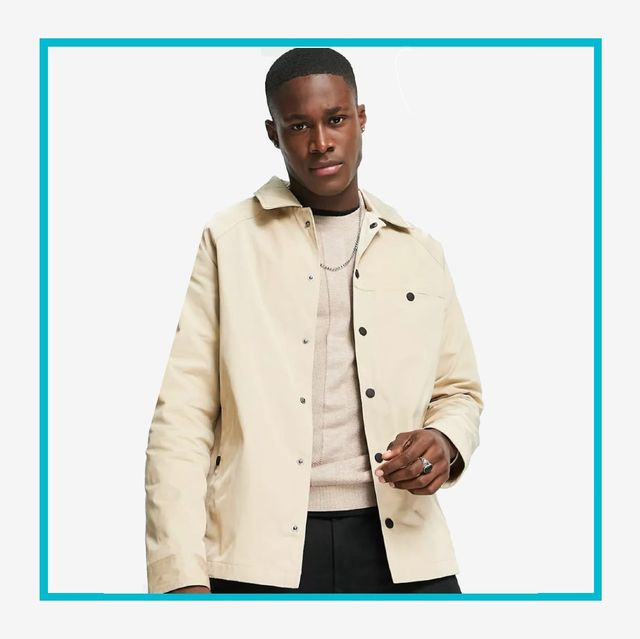How Sustainable Fabric Trends Are Shaping Branded Clothing Collections
How Sustainable Fabric Trends Are Shaping Branded Clothing Collections
Blog Article
Understanding Apparel: The Relevance of Material Options in Your Wardrobe
The option of fabric in garments plays a critical function in both appearances and capability. Different products supply differing degrees of breathability, comfort, and resilience, directly influencing the user's experience. Understanding these nuances can improve one's closet considerably. Many ignore how these options can influence not just personal design, however likewise sustainability. What textile decisions could redefine your wardrobe and align it with both style and obligation?
The Function of Material in vogue and Performance

Typical Fabric Kinds and Their Attributes
When choosing garments, comprehending the features of common textile kinds is important for making educated selections. Cotton, a widely-used natural fiber, is understood for its breathability, gentleness, and convenience, making it appropriate for sportswear and daily garments. Bed linen, another natural option, boasts superb moisture-wicking buildings and a distinctive texture, ideal for warm climates.Wool, frequently favored for its heat and longevity, varies in fineness; merino woollen is soft versus the skin, while coarser kinds are made use of for outerwear. Artificial textiles like polyester and nylon supply toughness and resistance to wrinkles, making them preferred for activewear and traveling garments. Finally, blends, which incorporate natural and artificial fibers, can improve functionality while keeping convenience. By recognizing these textile attributes, individuals can pick clothing that straightens with their way of life and aesthetic preferences.
Breathability and Convenience: Choosing the Right Fabrics for Different Environments
Selecting the ideal fabrics for different climates can greatly enhance convenience and overall wearability. Breathable products are important in hot environments, as they allow air flow and moisture dissipation. Fabrics such as cotton, linen, and moisture-wicking synthetics properly attract sweat far from the body, keeping the user cool and completely dry. On the other hand, in chillier environments, thicker textiles like wool or fleece provide insulation while keeping breathability, making sure warmth without overheating.Additionally, the option of textile weight plays a vital role; light-weight textiles are more effective for summertime, whereas larger choices are suited for wintertime wear. Comprehending the special residential or commercial properties of each textile makes it possible for people to dress suitably for differing climate condition. Eventually, choosing comfy and breathable materials customized to certain environments can considerably improve everyday convenience and enhance the general experience of putting on apparel.
Durability and Treatment: Just How Fabric Affects Longevity of Your Closet
Picking the right products can greatly influence the resilience and care requirements of a closet. Fabrics such as cotton and polyester are understood for their durability and ease of upkeep, making them excellent for day-to-day wear. In comparison, fragile materials like silk and lace call for even more cautious handling and specialized cleansing methods, which can boost the moment and initiative needed for care. Branded Clothing.Durability is also influenced by the material's weave and coating; securely woven fabrics tend to withstand deterioration far better than freely woven alternatives. Additionally, synthetic blends typically supply improved durability, combining the finest top qualities of numerous fibers.Understanding the care directions for each fabric is important, as improper cleaning or drying can cause premature wear. Eventually, choosing sturdy products can cause a longer-lasting closet, reducing the frequency of substitutes and adding to a much more sustainable fashion selection
The Influence of Fabric on Fit and Silhouette

Lasting Material Options: Making Eco-Friendly Decisions
The effect of fabric extends beyond fit and shape to encompass environmental factors, triggering a growing passion in sustainable material options. Green fabrics, such as organic cotton, hemp, and Tencel, are getting traction among consumers who prioritize sustainability in their wardrobes. These materials are often generated with less chemicals and water, lowering their ecological footprint.Additionally, recycled fabrics, made from post-consumer waste, supply an innovative solution to the textile sector's pollution trouble. Brands progressively welcome transparency in their sourcing approaches, permitting consumers to make informed choices about their purchases.Choosing lasting fabrics not only sustains honest techniques however additionally urges the garment industry to adopt more responsible production methods. As awareness of environmental issues rises, people are advised to review the long-term impact of their fabric choices, fostering an activity towards an extra ecologically conscious and lasting method to style.
Elevating Design: Exactly How Textile Can Change an Outfit
While numerous might concentrate on color and cut when choosing an attire, the option of material plays a crucial function in boosting style and enhancing total look. Various materials share distinctive state of minds and messages; as an example, silk radiates high-end and class, while jeans offers a laid-back, unwinded ambiance. The structure and drape of a textile can dramatically change the silhouette, with organized textiles giving a sleek look and softer ones developing a more fluid, loosened up aesthetic.Moreover, the weight of the fabric affects wearability across periods. Lightweight textiles like linen and cotton are excellent for summer, while much heavier materials such as wool and velour provide warmth and elegance in colder months. Recognizing textile residential or commercial properties, such as breathability and stretch, additionally encourages individuals to make informed options that boost comfort without jeopardizing design. Ultimately, the appropriate material can transform a clothing from common to phenomenal, making it a vital factor to consider in any closet.
Regularly Asked Concerns
Just how Do I Identify the Textile Material of My Clothes?
To recognize textile web content, one can analyze treatment labels, conduct burn tests for fiber recognition, or get in touch with fabric swatches. These techniques aid differentiate products, ensuring educated choices for clothes treatment and maintenance in everyday wear.
Can Textile Choice Affect My State Of Mind or Self-confidence?
Material choice can substantially affect a person's state of mind and self-confidence. Branded Clothing. Specific materials may evoke sensations of convenience or style, while others can really feel limiting or uncomplimentary, inevitably influencing self-perception and emotional health throughout the day
What Fabrics Are Finest for Sensitive Skin?
For individuals with delicate skin, natural discover this fabrics like cotton, bed linen, and bamboo are frequently recommended. These materials are breathable, hypoallergenic, and less most likely to trigger irritation, making them ideal choices for comfort and skin health.
How Do I Effectively Laundry and Care for Various Fabrics?
To effectively care and wash for various fabrics, one have to think about each material's certain requirements, consisting of temperature settings, detergents, and drying out techniques, making sure durability and preserving the material's initial top qualities for excellent usage.
Exist Details Fabrics for Athletic or Performance Put On?
Athletic or efficiency wear commonly uses fabrics click to read more such as spandex, nylon, and polyester. These products are designed for moisture-wicking, breathability, and flexibility, improving motion and convenience during physical activities while giving durability and assistance. Alternatively, in colder climates, thicker fabrics like wool or fleece supply insulation while keeping breathability, ensuring heat without overheating.Additionally, the option of fabric weight plays a crucial function; light-weight materials are better for summer, whereas much heavier options are suited for winter wear. In contrast, delicate products like silk and lace require even more mindful handling and specialized cleaning approaches, which can raise the time and effort required for care.Durability is also influenced by the textile's weave and coating; securely woven fabrics have a tendency to stand up to wear and tear better than loosely woven options. In contrast, stiff textiles can restrict movement yet provide a traditional, refined look.Moreover, the density and appearance of the fabric can affect the visual understanding of body form. The effect of material prolongs past fit and silhouette to include environmental aspects, triggering a growing passion in lasting material options. The texture and drape of a textile can considerably alter the shape, with organized textiles giving a polished appearance and softer ones developing an extra fluid, unwinded aesthetic.Moreover, the weight of the material affects wearability throughout seasons.
Report this page